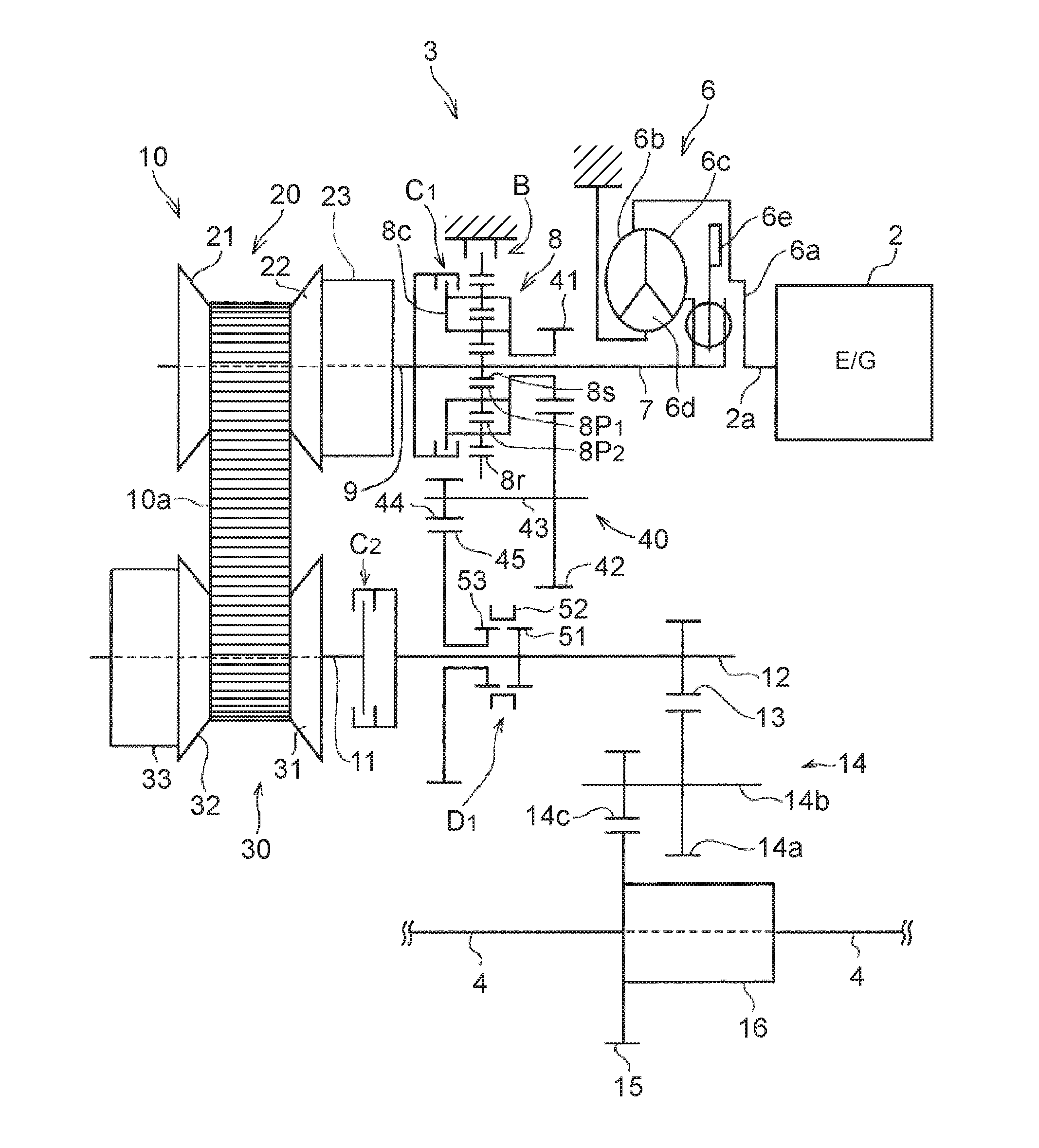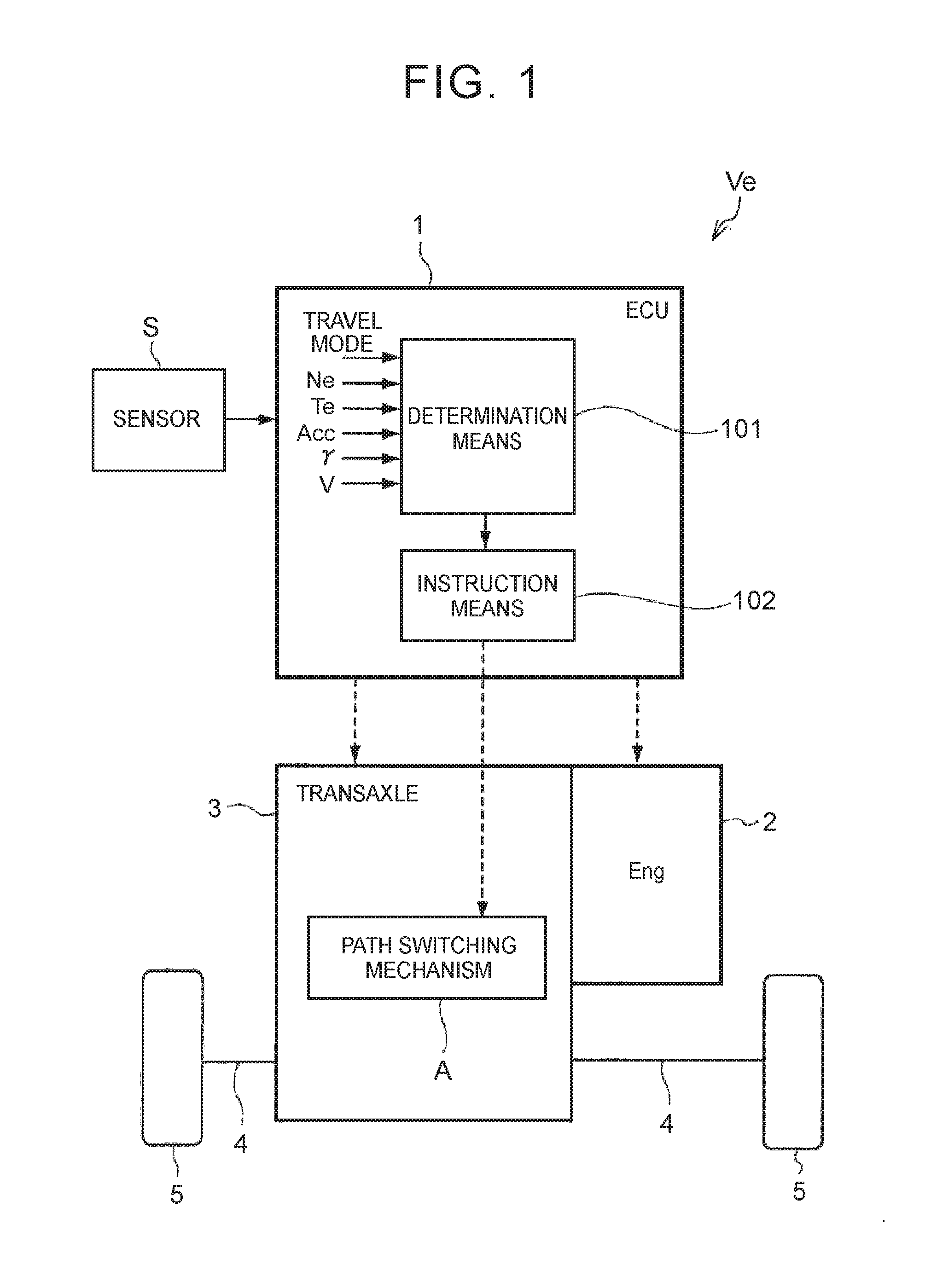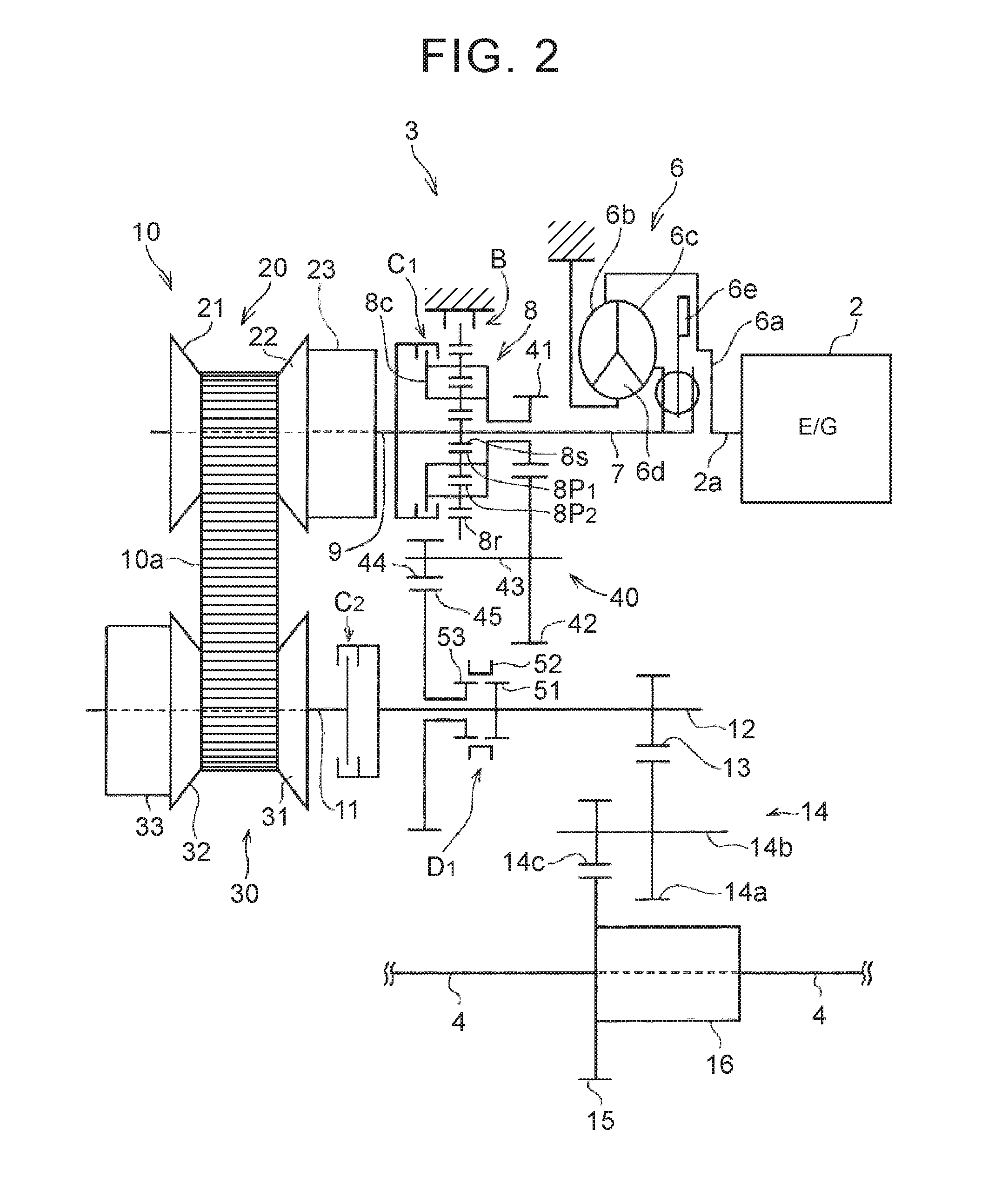Control device for vehicle
a control device and vehicle technology, applied in mechanical equipment, instruments, gearboxes, etc., can solve the problems of internal combustion engine inability to drive in an operation range where fuel can be saved, degrade the transmission efficiency of transmitting torque via fluid, and reduce the power loss caused by rotation of output shaft with transmission mechanism, so as to reduce the power loss, dampen the torsional vibration, and reduce the effect of vibration
- Summary
- Abstract
- Description
- Claims
- Application Information
AI Technical Summary
Benefits of technology
Problems solved by technology
Method used
Image
Examples
Embodiment Construction
[0047]A description will hereinafter be made on a control device for a vehicle according to the invention on the basis of specified examples. A vehicle as a target of the invention includes plural torque transmission paths that stretch from a power source to drive wheels. Those plural transmission paths include: a transmission path that includes a transmission mechanism capable of setting a fixed transmission gear ratio; and a transmission path that includes a continuously variable transmission capable of continuously changing the transmission gear ratio. Furthermore, the plural transmission paths are arranged in parallel between an input shaft, to which power output by the power source is input, and an output shaft for outputting the power to the drive wheels. Accordingly, the vehicle includes a path switching mechanism for switching the path capable of transmitting torque from one path to the other path. That is, it is configured to allow a vehicle to run in a state where any one ...
PUM
 Login to View More
Login to View More Abstract
Description
Claims
Application Information
 Login to View More
Login to View More - R&D
- Intellectual Property
- Life Sciences
- Materials
- Tech Scout
- Unparalleled Data Quality
- Higher Quality Content
- 60% Fewer Hallucinations
Browse by: Latest US Patents, China's latest patents, Technical Efficacy Thesaurus, Application Domain, Technology Topic, Popular Technical Reports.
© 2025 PatSnap. All rights reserved.Legal|Privacy policy|Modern Slavery Act Transparency Statement|Sitemap|About US| Contact US: help@patsnap.com



